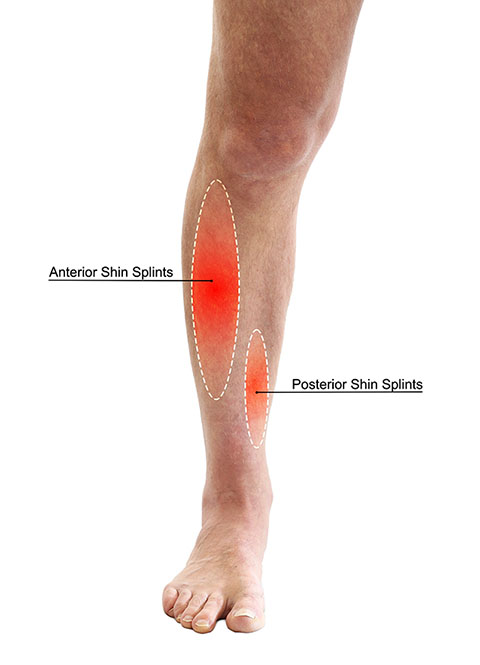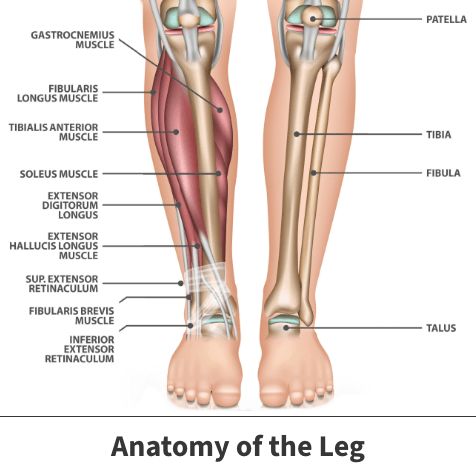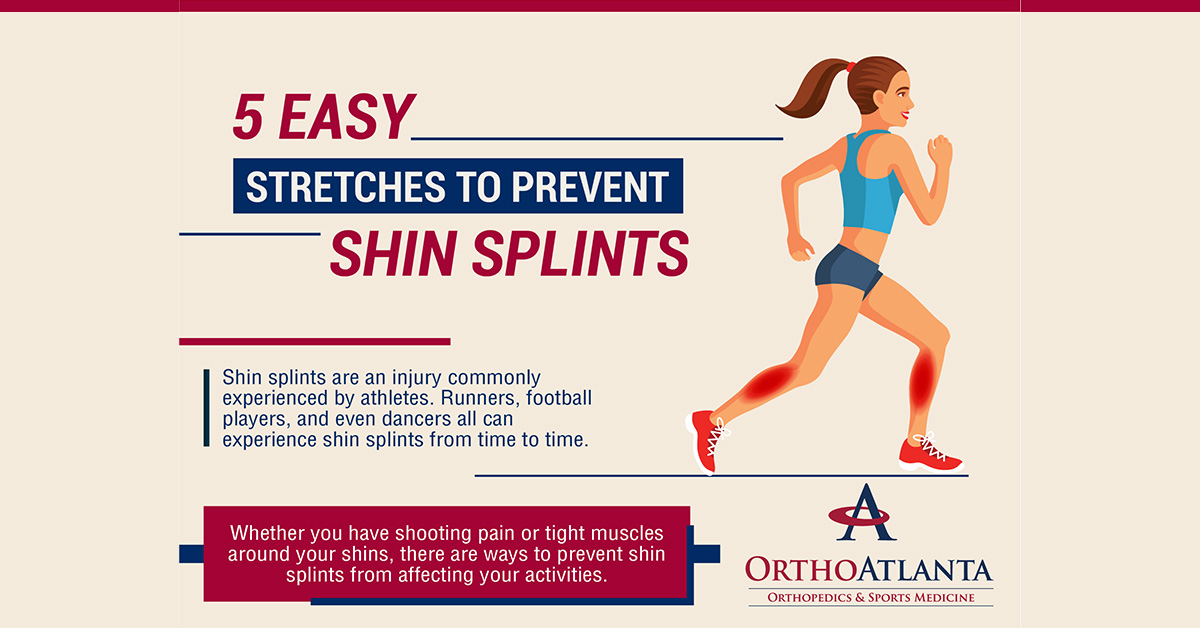What Are Shin Splints? A Comprehensive Overview
Shin splints, also known as medial tibial stress syndrome, refer to a common condition experienced by athletes and active individuals. This condition results from excessive stress on the tibia (shin bone) and the surrounding muscles, tendons, and other connective tissues. The primary cause of shin splints is repetitive impact, which can lead to inflammation and pain in the lower leg.
Several factors contribute to the development of shin splints, including overpronation, or the excessive inward rolling of the foot during running or walking. This motion can place additional stress on the lower leg muscles, leading to inflammation and pain. Muscle imbalances, such as weak hip abductors or tight calf muscles, can also contribute to the onset of shin splints.
Inadequate footwear is another significant factor in the development of shin splints. Wearing shoes that do not provide sufficient support, cushioning, or stability for your foot type and running style can increase the risk of shin splints. Runners with flat feet or high arches may be more prone to shin splints if they do not wear shoes that accommodate their unique foot structure.
To understand if you are experiencing shin splints, it is essential to recognize the typical symptoms associated with this condition. In the following sections, we will discuss how to identify shin splints and distinguish them from other lower leg injuries.
Identifying Shin Splints: Distinguishing Symptoms from Other Injuries
Shin splints are often characterized by pain, tenderness, and swelling in the lower leg, particularly along the inner edge of the tibia. The pain may be sharp or dull and can occur during or after exercise. In some cases, the pain may be so severe that it makes it difficult to walk or perform daily activities.
While shin splints are a common injury, it is essential to differentiate them from other lower leg injuries, such as stress fractures and compartment syndrome. Stress fractures are tiny cracks in the bone that can cause pain and swelling similar to shin splints. However, stress fractures tend to be more localized and may worsen with continued activity. Compartment syndrome, on the other hand, is a serious condition that occurs when pressure builds up in the muscles, restricting blood flow and causing pain and numbness. If left untreated, compartment syndrome can lead to permanent muscle damage or even amputation.
To determine if you have shin splints, consider the following factors:
- Location of pain: Shin splints typically cause pain along the inner edge of the tibia, while stress fractures may cause pain in a more specific location.
- Timing of pain: Shin splints often cause pain during or after exercise, while stress fractures may cause pain during activity or at rest.
- Swelling and tenderness: Shin splints can cause swelling and tenderness in the lower leg, while stress fractures may cause more significant swelling and bruising.
- Aggravating factors: Shin splints may worsen with increased activity, while stress fractures may become more painful with continued exercise.
If you are unsure whether you have shin splints or another lower leg injury, it is essential to consult a medical professional for a proper diagnosis and treatment plan. In the following sections, we will discuss when to consult a medical professional and the various treatment options available for shin splints.
Assessing Your Risk: Factors That Increase the Likelihood of Shin Splints
Several factors can increase the likelihood of developing shin splints, including:
- Sudden increases in training intensity or volume: Rapidly increasing the frequency, duration, or intensity of your workouts can place undue stress on the lower legs, leading to shin splints. It is essential to gradually increase your training volume and intensity to allow your body to adapt to the new demands.
- Poor running form: Inefficient running form, such as overstriding or excessive pronation, can contribute to the development of shin splints. Consider consulting a running coach or physical therapist to assess your running form and provide recommendations for improvement.
- Insufficient warm-up and cool-down routines: Failing to properly warm up and cool down before and after exercise can increase the risk of shin splints. Incorporate dynamic stretches and light jogging into your warm-up routine and static stretches into your cool-down routine to promote flexibility and reduce the risk of injury.
- Inadequate footwear: Wearing shoes that do not provide sufficient support, cushioning, or stability for your foot type and running style can increase the risk of shin splints. Ensure that your shoes are in good condition and appropriate for your foot type and running style.
- Running on hard or uneven surfaces: Running on hard or uneven surfaces, such as concrete or cambered roads, can place additional stress on the lower legs, increasing the risk of shin splints. Consider running on softer surfaces, such as trails or tracks, to reduce the impact on your legs.
To minimize the risk of shin splints, consider the following tips:
- Gradually increase your training volume and intensity, allowing your body to adapt to the new demands.
- Assess your running form and make adjustments as needed to improve efficiency and reduce the risk of injury.
- Always warm up and cool down before and after exercise, incorporating dynamic and static stretches as appropriate.
- Select appropriate footwear for your foot type and running style, and replace your shoes regularly.
- Avoid running on hard or uneven surfaces whenever possible, and consider incorporating cross-training activities to promote overall fitness and reduce the impact on your legs.
By taking steps to minimize the risk factors associated with shin splints, you can reduce the likelihood of developing this common injury and continue to enjoy your favorite activities without pain or discomfort.
When to Consult a Medical Professional: Seeking Diagnosis and Treatment
If you are experiencing persistent pain, tenderness, or swelling in your lower legs, it may be appropriate to consult a medical professional for a shin splint diagnosis. A healthcare provider can evaluate your symptoms, perform a physical examination, and order diagnostic tests, such as X-rays or MRIs, to rule out other potential causes of your pain, such as stress fractures or compartment syndrome.
Once a diagnosis of shin splints has been confirmed, your healthcare provider may recommend a variety of treatment options, including:
- Rest, ice, compression, and elevation (RICE): Resting your legs and avoiding activities that exacerbate your pain can help promote healing and reduce inflammation. Applying ice to the affected area can also help alleviate pain and swelling, while compression and elevation can further reduce inflammation and promote circulation.
- Physical therapy: Working with a physical therapist can help you develop a customized rehabilitation plan to address your specific needs and goals. Physical therapy may include stretching and strengthening exercises, manual therapy techniques, and modalities such as heat or cold therapy, ultrasound, or electrical stimulation.
- Orthotics: Custom-made orthotics, such as shoe inserts or custom-made orthoses, can help correct biomechanical issues and provide additional support to the lower legs. Orthotics may be particularly beneficial for individuals with flat feet or high arches, as these foot types can increase the risk of shin splints.
- Medications: Over-the-counter pain relievers, such as acetaminophen or nonsteroidal anti-inflammatory drugs (NSAIDs), can help alleviate pain and reduce inflammation. However, it is essential to use these medications as directed and to consult a healthcare provider before taking any new medications.
In some cases, surgery may be necessary to treat shin splints, particularly if other treatment options have been unsuccessful or if the condition is causing significant pain or disability. However, surgery is typically a last resort and is only recommended in rare cases.
By seeking prompt diagnosis and treatment for shin splints, you can help promote healing, reduce pain and inflammation, and prevent long-term complications. If you are experiencing persistent pain or other symptoms in your lower legs, consider consulting a medical professional for further evaluation and guidance.
Prevention Strategies: Strengthening and Stretching Exercises to Reduce the Risk of Shin Splints
Incorporating a regular routine of strengthening and stretching exercises can help reduce the risk of developing shin splints. These exercises can help improve lower leg strength, flexibility, and biomechanics, reducing the stress on the shins during physical activity.
Strengthening Exercises
The following strengthening exercises can help improve lower leg strength and reduce the risk of shin splints:
- Heel-to-toe walk: While standing, walk slowly along a straight line, placing the heel of one foot directly in front of the toes of the other foot. This exercise helps improve balance and strengthens the muscles that support the ankles and shins.
- Toe curls: While sitting, place a towel on the floor and use your toes to scrunch it up towards you. This exercise helps strengthen the muscles in the feet and lower legs.
- Calf raises: While standing, rise up onto the balls of your feet, hold for a moment, and then slowly lower yourself back down. This exercise helps strengthen the calf muscles, which can help reduce the stress on the shins during physical activity.
Stretching Exercises
The following stretching exercises can help improve lower leg flexibility and reduce the risk of shin splints:
- Calf stretch: While standing, place one foot forward and the other foot back, keeping the back leg straight. Lean forward, keeping your back straight, until you feel a stretch in the calf of your back leg. Hold for 30 seconds and repeat on the other side.
- Shin stretch: While sitting, place one foot on your opposite knee and pull your toes towards you, feeling a stretch in the front of your lower leg. Hold for 30 seconds and repeat on the other side.
- Ankle circles: While sitting, lift one foot off the ground and rotate your ankle in a circular motion, first in one direction and then the other. This exercise helps improve ankle mobility and reduce the risk of shin splints.
By incorporating these strengthening and stretching exercises into your regular routine, you can help reduce the risk of developing shin splints and improve your overall lower leg health. Remember to always warm up before exercise and cool down afterwards, and to listen to your body and adjust your training plan as needed to prevent injury.
Proper Footwear and Orthotics: Choosing the Right Shoes to Prevent Shin Splints
Selecting the right footwear is crucial in preventing shin splints. Wearing shoes that are appropriate for your foot type and running style can help distribute impact forces more evenly across the foot, reducing stress on the shins. Here are some tips for choosing the right shoes:
- Get fitted by a professional: Consider visiting a specialty running store where knowledgeable staff can assess your foot type and running style, and recommend shoes that are best suited for you.
- Replace your shoes regularly: Running shoes typically last between 300 to 500 miles, depending on the brand, model, and runner’s weight. Keep track of your mileage and replace your shoes when they show signs of wear or when you reach the recommended mileage.
- Choose shoes with adequate cushioning and support: Look for shoes that provide ample cushioning and support in the midsole, particularly in the arch area. Shoes with motion control features or stability devices can help correct overpronation or supination, reducing the risk of shin splints.
In addition to selecting the right shoes, using orthotics can also help prevent shin splints. Orthotics are devices that are inserted into shoes to correct biomechanical issues, such as overpronation or supination, and provide additional support to the foot and lower leg. Here are some benefits of using orthotics:
- Correcting biomechanical issues: Orthotics can help correct overpronation or supination, reducing the stress on the shins and other lower leg muscles.
- Providing additional support: Orthotics can provide additional support to the arch and heel, reducing the risk of overuse injuries and improving overall foot function.
- Customizable: Custom-made orthotics can be tailored to your specific foot shape and biomechanical needs, providing a more personalized fit and greater effectiveness.
If you are experiencing shin splints or other lower leg pain, consult a medical professional for a proper diagnosis and treatment plan. In some cases, orthotics may be recommended as part of a comprehensive treatment plan to address biomechanical issues and prevent re-injury.
Gradual Progression: Building Endurance and Strength Safely
Gradually increasing your training volume and intensity is key to preventing shin splints and other overuse injuries. Rapidly increasing your mileage or intensity can put undue stress on the lower legs, leading to pain and inflammation. Here are some tips for safely increasing your training volume and intensity:
- Follow the 10% rule: Increase your weekly mileage by no more than 10% to allow your body to adapt to the increased workload. For example, if you ran 10 miles this week, aim to run no more than 11 miles next week.
- Incorporate rest days: Schedule rest days into your training plan to allow your body to recover and rebuild. Aim for at least one rest day per week, and consider taking additional rest days if you are experiencing fatigue or soreness.
- Cross-train: Incorporate cross-training activities, such as swimming or cycling, into your training plan to reduce the impact on your lower legs and improve overall fitness.
- Listen to your body: Pay attention to signs of fatigue or discomfort, and adjust your training plan as needed. If you are experiencing pain or inflammation, take a break from running and consider consulting a medical professional for a proper diagnosis and treatment plan.
By following these tips and gradually increasing your training volume and intensity, you can build endurance and strength safely, reducing the risk of shin splints and other overuse injuries. Remember to always prioritize rest and recovery, and to listen to your body to prevent injury and promote long-term health and wellness.
Returning to Running: A Safe and Effective Strategy
Returning to running after recovering from shin splints can be a challenging process, but with a gradual and strategic approach, you can minimize the risk of re-injury and get back to your favorite activities safely. Here is a step-by-step plan for returning to running after recovering from shin splints:
- Start with cross-training: To reduce the impact on your lower legs, start by incorporating low-impact cross-training activities, such as swimming or cycling, into your training plan. Aim for at least 2-3 weeks of cross-training before attempting to run again.
- Begin with a walk-run program: Once you feel ready to start running again, begin with a walk-run program that gradually increases your running time and decreases your walking time. For example, you might start by walking for 5 minutes and running for 1 minute, and gradually increase the running time each week while decreasing the walking time.
- Focus on form: Pay attention to your running form, and make sure you are landing midfoot rather than on your heel. This can help reduce the impact on your lower legs and minimize the risk of re-injury.
- Incorporate strength training: Strengthening the muscles in your lower legs can help prevent shin splints from recurring. Incorporate exercises such as heel-to-toe walks, toe curls, and calf raises into your training plan.
- Listen to your body: Pay attention to signs of fatigue or discomfort, and adjust your training plan as needed. If you experience pain or inflammation, take a break from running and consider consulting a medical professional for a proper diagnosis and treatment plan.
By following this step-by-step plan and listening to your body, you can safely return to running after recovering from shin splints. Remember to prioritize rest and recovery, and to gradually increase your training volume and intensity to prevent re-injury and promote long-term health and wellness.








